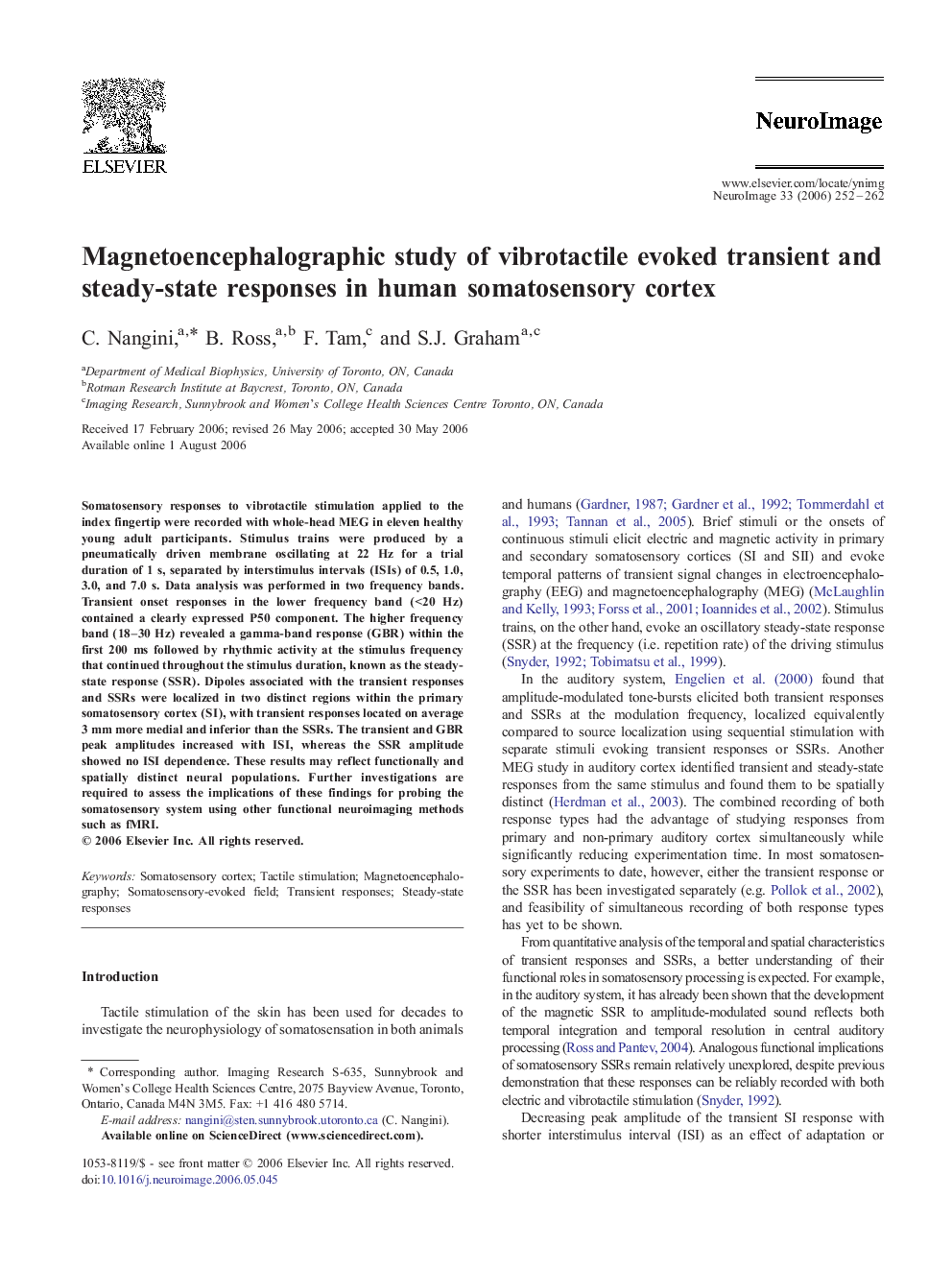| Article ID | Journal | Published Year | Pages | File Type |
|---|---|---|---|---|
| 3073670 | NeuroImage | 2006 | 11 Pages |
Somatosensory responses to vibrotactile stimulation applied to the index fingertip were recorded with whole-head MEG in eleven healthy young adult participants. Stimulus trains were produced by a pneumatically driven membrane oscillating at 22 Hz for a trial duration of 1 s, separated by interstimulus intervals (ISIs) of 0.5, 1.0, 3.0, and 7.0 s. Data analysis was performed in two frequency bands. Transient onset responses in the lower frequency band (<20 Hz) contained a clearly expressed P50 component. The higher frequency band (18–30 Hz) revealed a gamma-band response (GBR) within the first 200 ms followed by rhythmic activity at the stimulus frequency that continued throughout the stimulus duration, known as the steady-state response (SSR). Dipoles associated with the transient responses and SSRs were localized in two distinct regions within the primary somatosensory cortex (SI), with transient responses located on average 3 mm more medial and inferior than the SSRs. The transient and GBR peak amplitudes increased with ISI, whereas the SSR amplitude showed no ISI dependence. These results may reflect functionally and spatially distinct neural populations. Further investigations are required to assess the implications of these findings for probing the somatosensory system using other functional neuroimaging methods such as fMRI.
